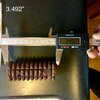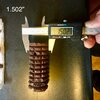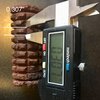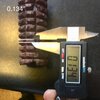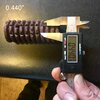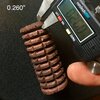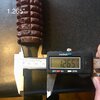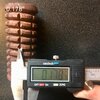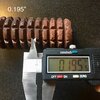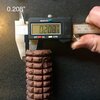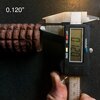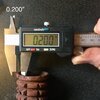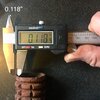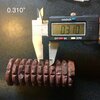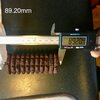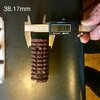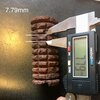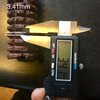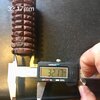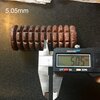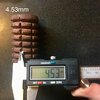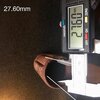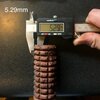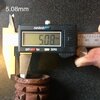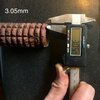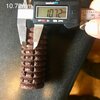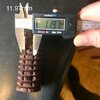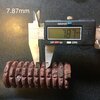Hey
Sabs ! The British were probably using the B.S.W. (British Standard Whitworth), but the grenade parts do line up with S.A.E. guages, and S.A.E. was around back then as well.
The Ti's were probably all inch measurements too since they were from Dallas Texas. Though the only solid fractional measurement on the stupid thing is that the Bubble Strip is 1/2" in width. Then there's the 2.5mm spacing on the circuit board, but nothing else measures out to a solid metric measurement. Texans, they do it their own dam' way. GO FIGURE!
The A.S. knobs are equally strange! I don't think a single measurement was used to create them. I'd bet they were hand spun, milled, modelled onto, and then cast from that original part.
Now, in stark contrast, our hallowed Grand Master, Oscar Steiner, was a man of measurement. Everything on a GRAFLEX lands on a solid fraction. Thank the Maker!
And just to echo what others have already stated, most of the major original Obi-Wan Lightsaber parts were made from items that were created using inches as their unit of measure. I think it's sad that you're doing all this work in the metric system, it just doesn't feel correct. For all the time and effort you've put in to the drawings of this project, they really should be in inches. I think it would be all the more impressive if the drawings you are recreating were accurate to their creators' system of measure. The accuracy would therefore be the intent of the creator, rather than the inaccurate result of the manufacturer. For instance, if you measure a cylindrical part at 16+ places, you might get 16+ different measurements if you're using 1000ths of an inch, but if you were using fractions of an inch you might get half or even fewer different measurements. Not to say that you couldn't take all those 1000ths/in measurements to get the average and then try and figure out what the intended fractional size was supposed to be, but it wouldn't be right to say that an object was 95/128" when it was designed to have been 3/4". Even if you said it was 19.05mm, it would still be wrong. Now if you wanted to say it was 3/4" +/- 0.0025"(or whatever the average variance seems to be), that'd be spectacular!
Anywho, the soapbox I created there seems to measure out at 3' L x 2' H x 2' W, but I made it out of wood 2x4's sooo....

It'd be really neat to see all of the different parts in a single drawing! Kind of like an assembler's guide/exploded view, with each part in order of its place on the lightsaber.
Good Luck with the rest of the project!
p.s. you have the drawing names for the Balance Pipes misspelled as "Balence".

